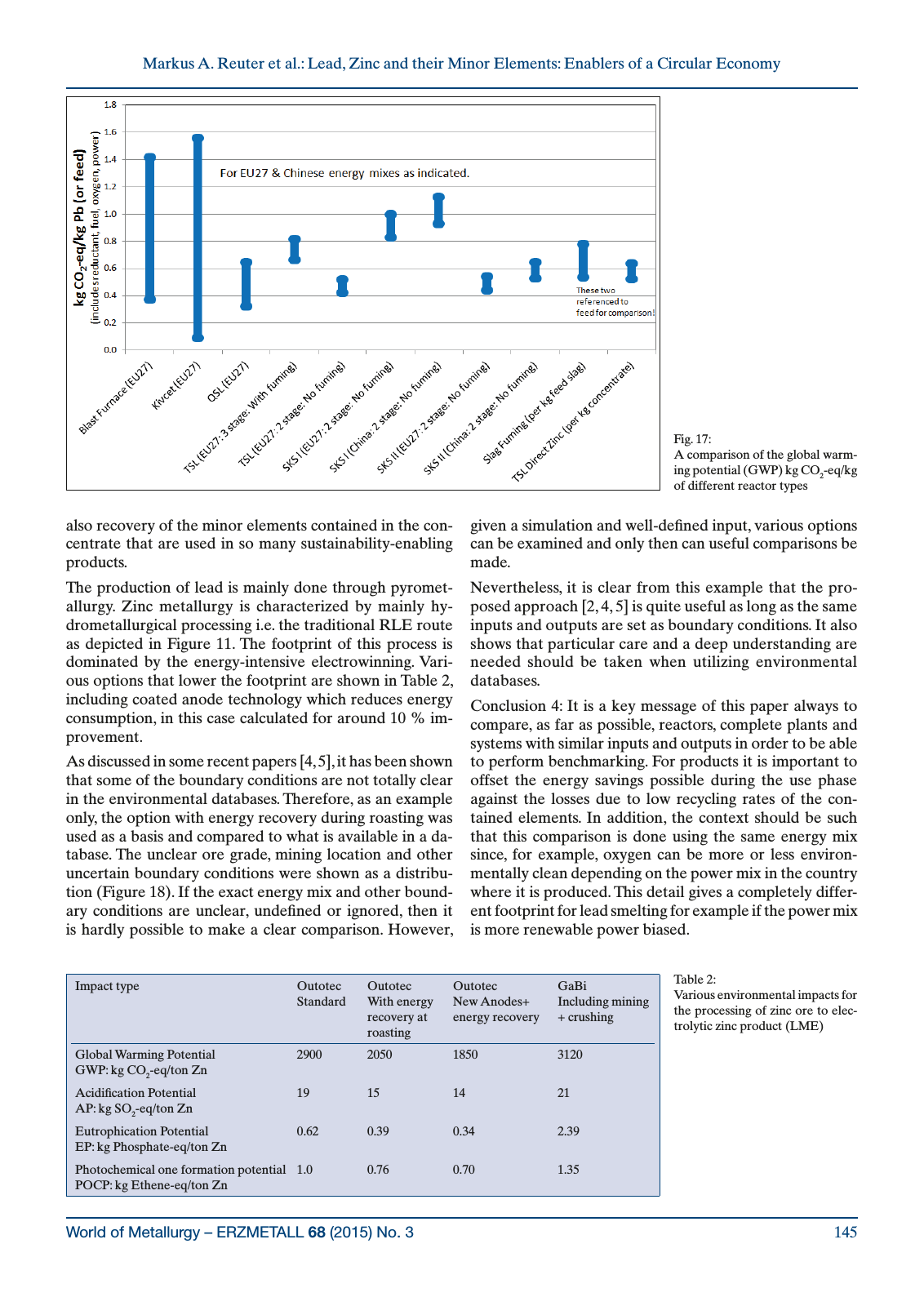World of Metallurgy ERZMETALL 68 2015 No 3 145 Markus A Reuter et al Lead Zinc and their Minor Elements Enablers of a Circular Economy also recovery of the minor elements contained in the con centrate that are used in so many sustainability enabling products The production of lead is mainly done through pyromet allurgy Zinc metallurgy is characterized by mainly hy drometallurgical processing i e the traditional RLE route as depicted in Figure 11 The footprint of this process is dominated by the energy intensive electrowinning Vari ous options that lower the footprint are shown in Table 2 including coated anode technology which reduces energy consumption in this case calculated for around 10 im provement As discussed in some recent papers 4 5 it has been shown that some of the boundary conditions are not totally clear in the environmental databases Therefore as an example only the option with energy recovery during roasting was used as a basis and compared to what is available in a da tabase The unclear ore grade mining location and other uncertain boundary conditions were shown as a distribu tion Figure 18 If the exact energy mix and other bound ary conditions are unclear undefined or ignored then it is hardly possible to make a clear comparison However given a simulation and well defined input various options can be examined and only then can useful comparisons be made Nevertheless it is clear from this example that the pro posed approach 2 4 5 is quite useful as long as the same inputs and outputs are set as boundary conditions It also shows that particular care and a deep understanding are needed should be taken when utilizing environmental databases Conclusion 4 It is a key message of this paper always to compare as far as possible reactors complete plants and systems with similar inputs and outputs in order to be able to perform benchmarking For products it is important to offset the energy savings possible during the use phase against the losses due to low recycling rates of the con tained elements In addition the context should be such that this comparison is done using the same energy mix since for example oxygen can be more or less environ mentally clean depending on the power mix in the country where it is produced This detail gives a completely differ ent footprint for lead smelting for example if the power mix is more renewable power biased Fig 17 A comparison of the global warm ing potential GWP kg CO2 eq kg of different reactor types Table 2 Various environmental impacts for the processing of zinc ore to elec trolytic zinc product LME Impact type Outotec Standard Outotec With energy recovery at roasting Outotec New Anodes energy recovery GaBi Including mining crushing Global Warming Potential GWP kg CO2 eq ton Zn 2900 2050 1850 3120 Acidification Potential AP kg SO2 eq ton Zn 19 15 14 21 Eutrophication Potential EP kg Phosphate eq ton Zn 0 62 0 39 0 34 2 39 Photochemical one formation potential POCP kg Ethene eq ton Zn 1 0 0 76 0 70 1 35

Hinweis: Dies ist eine maschinenlesbare No-Flash Ansicht.
Klicken Sie hier um zur Online-Version zu gelangen.
Klicken Sie hier um zur Online-Version zu gelangen.